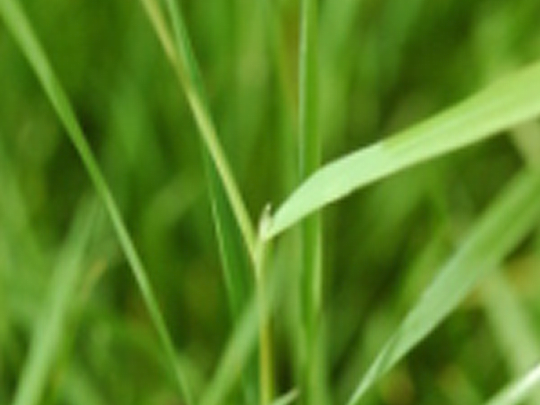Perennial grass with strongly branched stolons. Grows in early spring, produces geniculate culm shoots with long panicles, flowers May to June. Found on all types of grassland especially damp, wet soils and inundated areas. Grows in semi-shade in copses and parkland. Requires a plentiful supply of water and nutrients. Easily identified as bright green patches on lawns. Widespread in damp and seasonally flooded areas. Although not cultivated, rough stalked meadow grass frequently grows as a weed on land where fodder crops are grown such as meadows and pastures and occasionally also in leys. It scores 7 for its feed value, but yields are less satisfactory. Often only the first growth is productive. Does not tolerate prolonged snow covering, frost and drought. Unpopular in grassed areas due to its instability, and thus regarded as a weed.
| Leaf | Leaf folded in the bud, leaf sheath open, leaf blade tapers to a point without forming a boat-shaped tip, underside glossy, upper side with double groove, unribbed. Ligule tongue-shaped and white. Auricles absent. Leaf colour bright to yellowish green, lodges in lawns. |
| Culm | Shoots in early spring, producing geniculately ascending stem shoots up to 1 m tall. |
| Inflorescence | Long, 5-branched panicle, large spikelets, sometimes reddish purple. 4–8 florets on each spikelet, glumes lanceolate, lemma long, 5-veined with pointed tip and short bristles, otherwise awnless. |
| Fruit | Lanceolate grains 3–4 mm long, sharply pointed lemma. Edges of palea partially covered by lemma. Pedicel relatively long with cup-shaped end. Caryopsis striated with slightly pointed tip, 3-sided and visible through the lemma. TSW approx. 0.2 g. |

